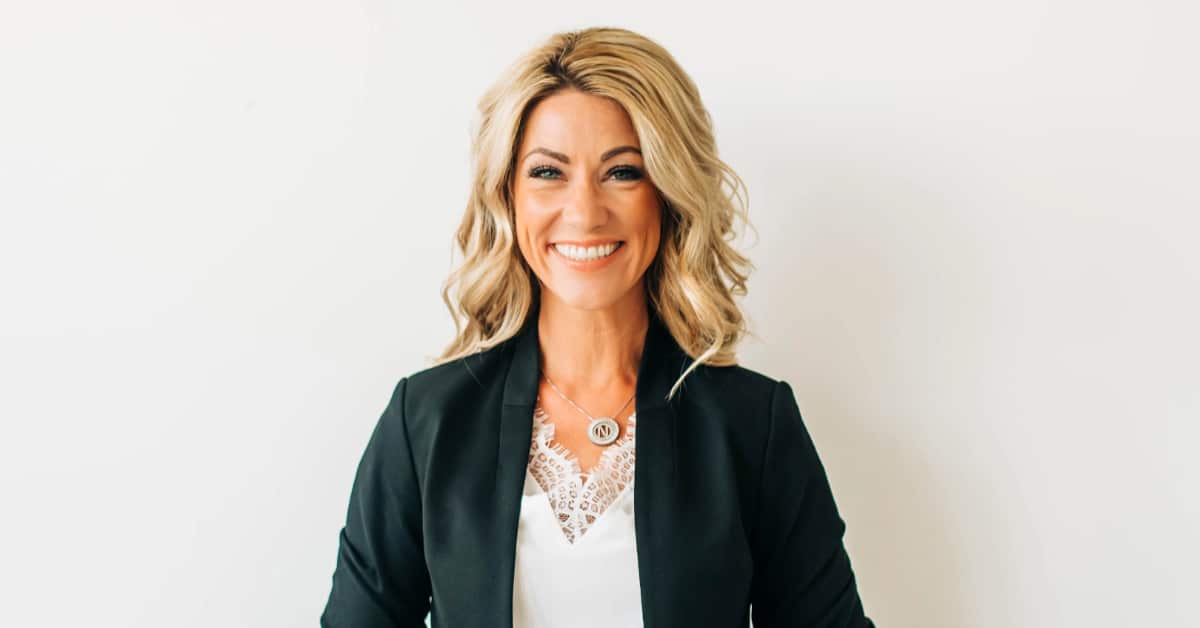Managers—and training providers—often use the terms “training” and “coaching” interchangeably. This leads to some confusion for both managers and employees, and makes it difficult to evaluate the outcomes of either Training or Coaching.
Training and Coaching share similar goals and outcomes: to promote individual learning, and generate positive changes in the learner’s behavior. But they differ in their approach, their time-frame, and their expectations.
Essentially, training is about transferring knowledge while coaching is about enhancing knowledge and practicing skills so that they become an integral part of how the learner acts, and even who they are, when taking an inbound call from a customer.
Coaching is a way to apply learning, immediately. Training assumes that learners will remember knowledge so it can be applied. For salespeople, BDRs, and all call-handlers, being able to remember and apply knowledge will improve their performance and productivity. Which means more appointments, more sales, more for everyone.
Except,
it doesn’t work like that—as most of us know from
our personal learning experience, and from years of trying to improve others’
performance in dealerships.
The good news is that it isn’t that you have hired the wrong
people. It wasn’t your bad hiring, or their lack of attitude,
motivation, or commitment. The bad news is that most of us humans
don’t learn very well from conventional training. Neuroscience may
explain why.
Brain science research shows that an average of 50 percent of the information received in classroom training is forgotten within one hour. After 24 hours, on average, only 30% is retained. And within a week, only 10% of that valuable, expensive training information remains…
So, much
of the $642 million spent annually by US dealerships on Training is wasted.
(Average Annual dealership spending is estimated at $36,000.)
Maybe if some of the $642 million spent annually by US dealerships on Training were re-distributed and re-prioritized to reflect a training/coaching mix, the ROI would be a lot more rewarding for owners, managers, and learners.
The low-cost/high-return solution to this is Coaching.
Research shows conclusively that when training is accompanied by one-to-one coaching, the learner not only remembers more, but more importantly, changes their behavior more quickly and more positively. Both training and coaching are required; but neither is sufficient on its own.
Certainly, training can’t do the job on its own. And coaching, applied without the foundation of basic prior knowledge, won’t succeed either. Retaining the knowledge and applying the skills require both coaching and training to create lasting change.
The main difference between coaching and training is simply that it works. Much more effectively. That’s a scientific fact, not a subjective opinion. It can be measured, and compared, if you want to take an evidence-based approach. Without coaching, most “learning” isn’t implemented. Even if the learner remembers the training content, they usually don’t put it into practice.. It doesn’t become habitual, part of how they normally do things. Once the learner starts being coached, you can measure their progress and the effect on the business results.
What difference does Coaching make?
Besides the differences in semantics, and in the learning theories, the most important difference for a dealership is that Coaching is demonstrably more effective. Which means increasing revenue for the dealership, and personal gratification for the employee.
According to Phone Ninjas, the average dealership is receiving roughly 300 prospective customer phone calls per month. On average, that results in 75 appointments (25% of those shoppers).
Through phone coaching, their best clients are achieving an 80% appointment ratio—which will result in 240 appointments made. The close ratio for those appointments that show is 50%.
The cost of Not coaching your call handlers is clearly critical. Do your own math. Calculate what you are missing—and what you could be earning—with an appointment ratio of 60-80%.
Training on its own cannot match those numbers. Reading-a-script-from-a-card/screen will not improve your appointment rate. Only consistent coaching creates the level of competence required to turn more than 60% of your inbound calls into appointments.
Let’s look at one skillset as an example. Let’s focus on one small but critical aspect of a dealership’s business: how to answer an inbound call in a way that generates an appointment, which then sells a vehicle, which creates additional revenue.
Training is an Event
Training to answer an inbound phone call, and quickly turn that into an appointment, and then a subsequent vehicle purchase, is typically an Event. The trainer presents a model of how to do it most effectively, there may be some kind of role-play, and then the learners are sent back to their stations to put it into practice.
Coaching Is a Journey
Coaching is a journey, rather than an event. It’s a process, a partnership, between the Coach and the Learner. It has a destination, an end-goal. It works in micro-steps that lead to the SMART Goals agreed by the learner and the coach. (SMART= Specific, Measurable, Achievable, Relevant, Time-bound).
Coaching embeds the desired knowledge and skills through personalized, focused attention, feedback, feedforward, and encouragement—until the desired language and behavior become a habit.
Coaching the Learning Curve
Coaching accelerates and consolidates the natural learning curve for any skill. This 4-stage learning curve (below) has been part of learning theory for so long that it is hard to define who first proposed or used. Some suggest that it started with the ancient Greeks. It still works now.
Unlike Training, Coaching is a personalized, individually-paced process that reflects the learner’s learning curve, and responds to their growing skills and application. These steps are consecutive, and each stage can be shortened by skillful coaching and practice.
- Unconscious Incompetence: (I don’t know what I don’t know.)
The call-handler is unaware of proven techniques that will increase the likelihood of a positive outcome (the appointment). Even those of us with years of experience, who think we are “pros” by now, might just be unaware that there are specific steps and phrases that will greatly increase our appointment rate. Often, we don’t acknowledge that we need this skill—”we’re already doing OK, thanks…”
- Conscious Incompetence:
(LEARNING: I know what I don’t know…now what?)
The call-handler becomes
aware—through feedback, or a mystery-shop, or by hearing a better example of
answering the call—that they need to learn to use this new way.
We may acknowledge (even grudgingly) that it would help.
- Conscious Competence:
(PRACTICING: I know what to do, and I am applying it.)
The call-handler is
coached to try the new technique, to practice repeatedly, to fine-tune their
responses and their thinking, through self-observation and coaching.
We begin to feel increasingly good about using this skill, and our results.
- Unconscious Competence:
(EXPERT: I know I’m getting better results; I just don’t think about it anymore.)
The call-handler becomes fluent in using the technique, which has become second-nature, part of their personalized way of speaking and thinking. It has become a HABIT. We don’t consciously act on a habit. Habits are unconscious drivers of behavior, which makes them so powerful (think about your own good and bad habits). We may even be unable to recall what it was like before we adopted these new habits; they feel like a part of us.
- Excellence:
(MASTERY: I know I have mastered competency. I get great results. What’s next? How can I continue to improve?)
There is also a (controversial) Fifth Stage to this model, in which Experts develop Mastery, and continue to improve—just as the top professionals in sport, music, etc. continue to have a coach. The pursuit of Excellence becomes a Growth mindset, one of the keystones of an ideal dealership culture.
WHY IS ACTIVE COACHING SO EFFECTIVE?
There may be many
layers of reasons for the significant impact of Coaching, compared to Training.
- Firstly, Active Coaching is
S.M.A.R.T.
S=Specific: detailed, accurate, based on the learner’s own experience, situationally-based.
M=Measurable: using the actual data from recorded calls, the learner can see and hear their progress
A=Achievable: learners know the overall goal, and implement their micro-learning step-by-step, stretching beyond their prior competency until they achieve full Competence, Expertise, and continuing Mastery.
R=Relevant: Learners perform in real-time, using real inbound calls to practice and enhance their skills, and become increasingly confident in doing their job.
T=Time-frame: Learners receive timely feedback and feedforward shortly after their experience, making it more meaningful and impactful. Also, the coaching is brief, and focused.
- Brain Science: In the terminology of coaching science, cognitive science, and neuroscience, Active Coaching connects with the brain’s receptiveness to Immediacy, Recency, Urgency, Relevancy, and Primacy. We learn best from what seems most Important, Right Now.
- Personalization: As in so many fields, from Executive Coaching to true
Sales Coaching and High-Performance Coaching, it is deeply, uniquely personal.
The key is that the learner is in-charge, investing in their own development, responsible for their own results, creating and managing their own S.M.A.R.T. Goals**.
- Autonomy: They don’t feel like they are being “managed”, pushed,
or directed. This sense of self-determination and empowerment is rare in our
industry, but entirely possible and appropriate for dealership employees. It
could apply to so many aspects, not just call-handling.
**(S.M.A.R.T. stands for Specific, Measurable, Achievable, Relevant, and Time-bound).
It might just be the Hawthorne
Effect. People respond to the
attention they receive.
Attention and focus direct the brain to adopt new behaviors to achieve results.
- The Learner is a partner in the coaching process. The S.M.A.R.T. Goals are their Goals. The Coach may Nudge or suggest S.M.A.R.T. Goals. But the Learner owns them. Learners learn more quickly—and are willing to change their behaviors and habits more permanently—when they take responsibility for their own progress.
- ROI (Return on Investment)
There are obvious
lasting benefits to the Dealership, the Sales Manager, the individual who is
being coached, and the whole team. Coaching shortens the learning curve, raises
the Dealership’s standards, reduces Management time, noticeably increases
Appointments and Revenue, motivates employees, enhances your CX (customer experience)
and reduces the need for repeat training.
CONCLUSION (to Part I of this series)
Learning to answer the phone correctly and make an appointment is a skill-set that is of great value to the dealership. Coaching is significantly more effective than Training in changing the learner’s ability to make an appointment from an inbound call.
Not all coaches are alike, and not
all “coaching” works in all situations, with all people.
What makes the Active Coaching model most effective in dealership phone
training is that it meets many of the criteria for learning retention and
activation, identified by neuroscience and cognitive science:
- It is Experiential Learning: the learner uses their personal experience of doing what they are learning—not just hearing about it or seeing a report of their calls.
- It is based on Feedforward rather than Feed-back:
Feedback is a necessary aspect of performing well at any job and
learning to be better. In fact, employees typically rely on feedback to know if
they’re meeting expectations. Without feedback, employees may feel
unappreciated and uncertain.
In active coaching, the learner also receives Feed-forward. When an
employee receives feedback, they get information about how they have
performed in the past. Feedforward is the reverse exercise of feedback.
It’s the process of replacing positive or negative feedback with future-oriented
solutions. In simple terms, it means focusing on the future instead of the
past.
Instead of receiving Feedback on how their inbound phone skills have been less
than effective in the past (feedback), an employee receives specific
suggestions, recommendations, and encouragement to handle calls in the future (feedforward).
***Feedforward is about assisting employees in moving past whatever is
slowing-down their progress, and negatively affecting their productivity and
performance.
***Look out for our future article on
how to use Feedforward
to transform your dealership’s ability to excel in everything you do.
We have explored some of the differences between Coaching and Training, and why Coaching is the more cost-effective solution for the dealership.
The question isn’t whether Coaching is better than Training, or whether you can afford to provide continuous, focused, personalized coaching to your BDC or your Sales teams.
You just can’t afford not to.
Lorem ipsum dolor sit amet, consectetur adipiscing elit. Morbi ac tincidunt lorem. Donec odio purus, facilisis vitae erat vel, suscipit tristique turpis.






